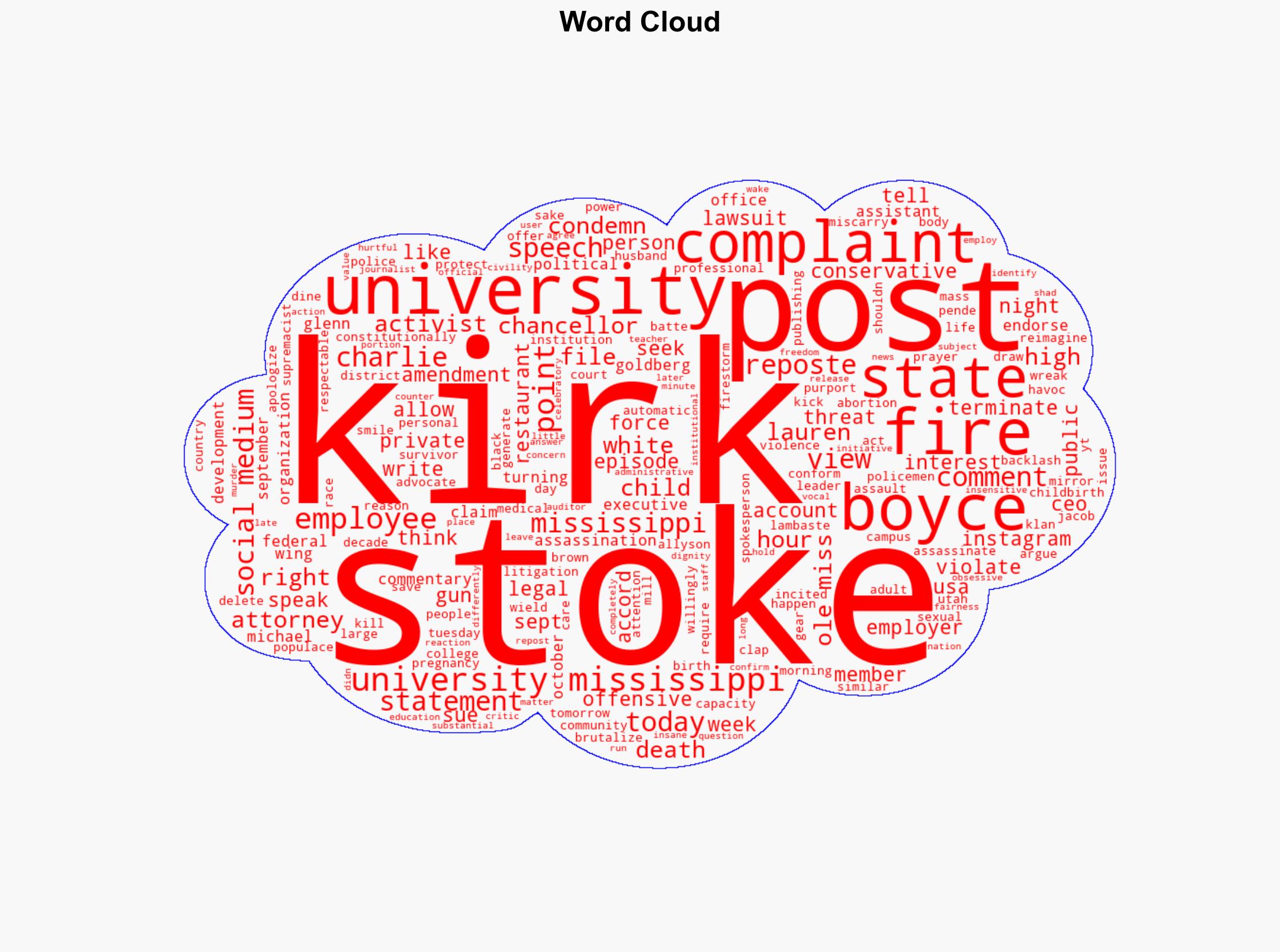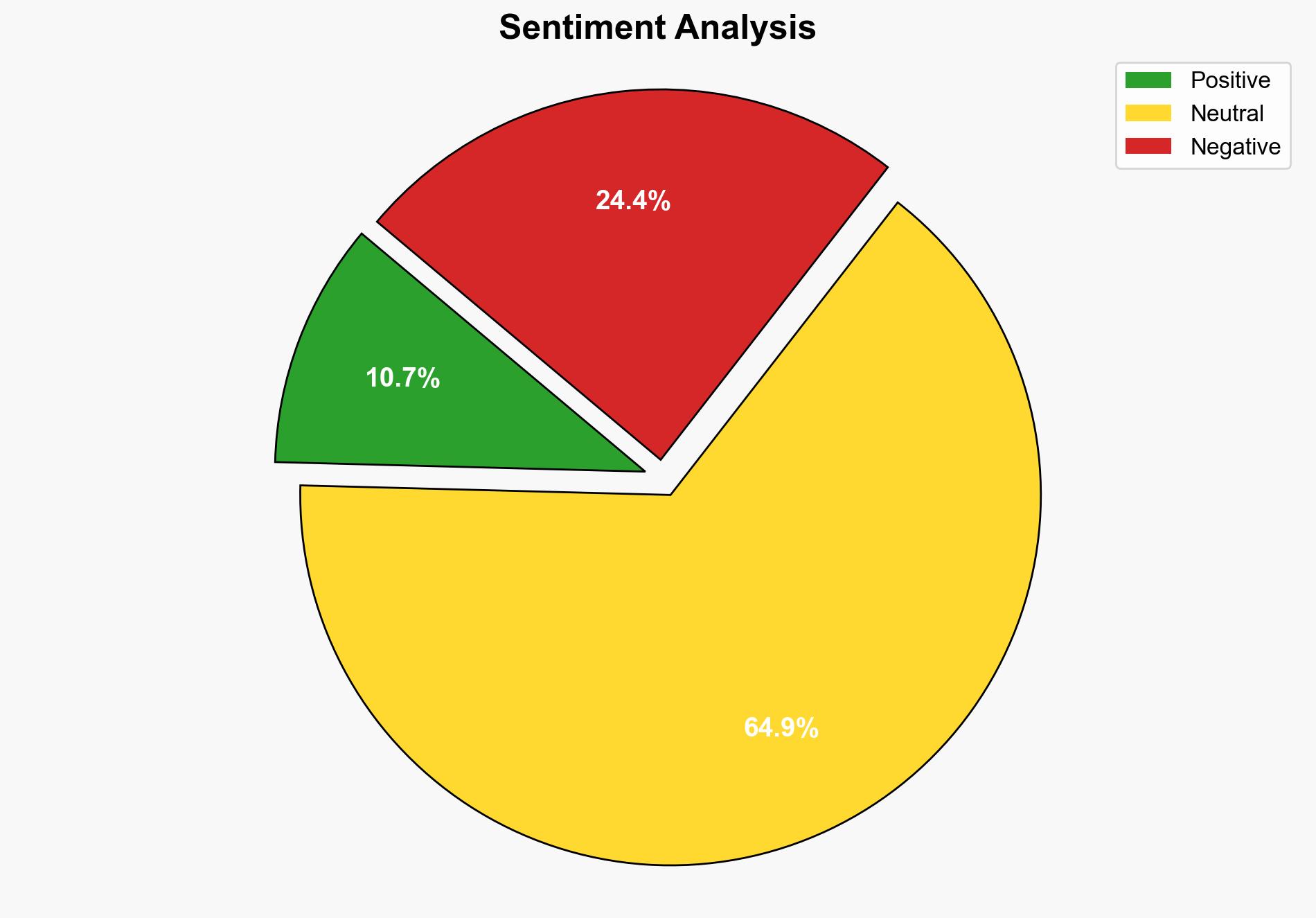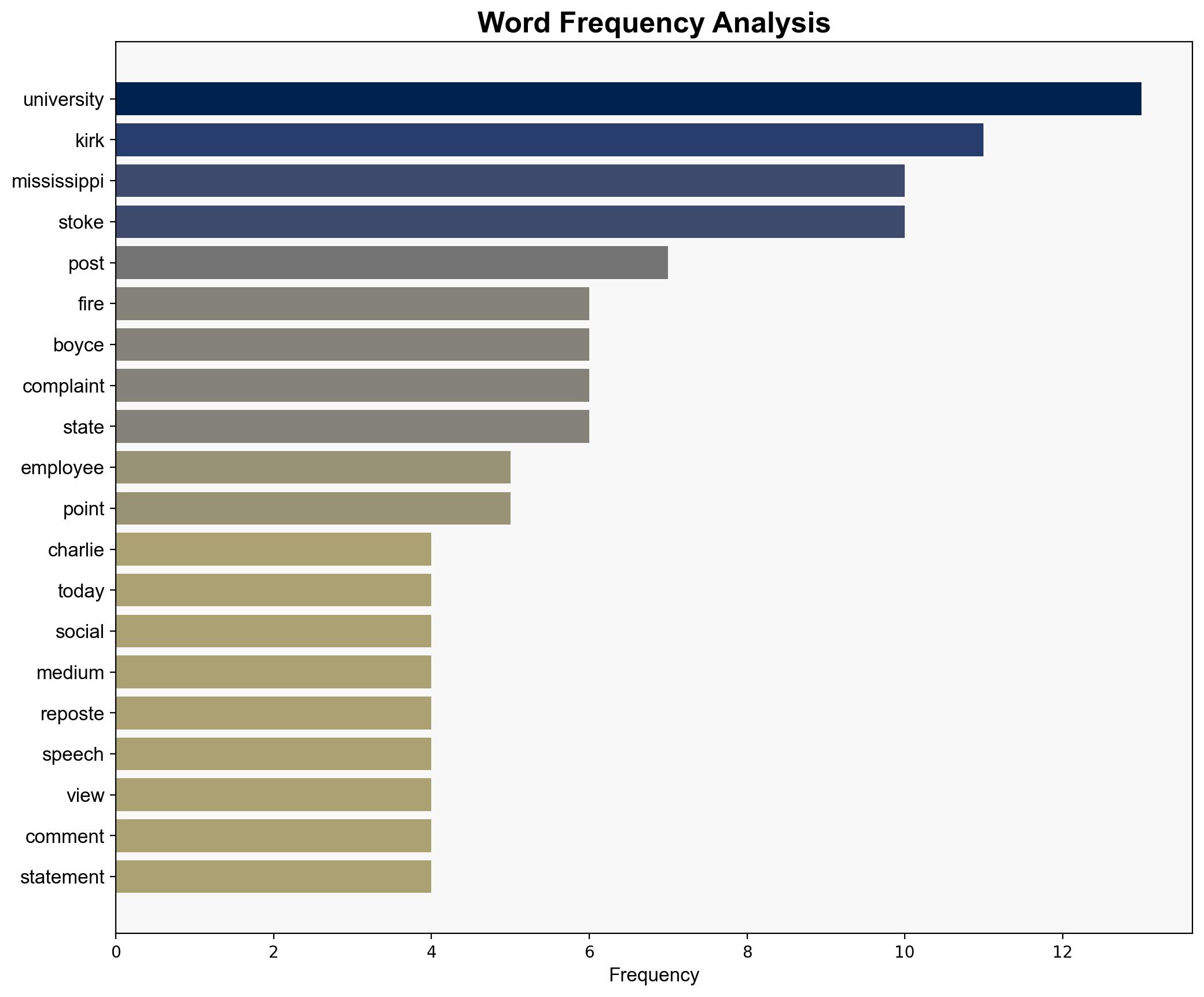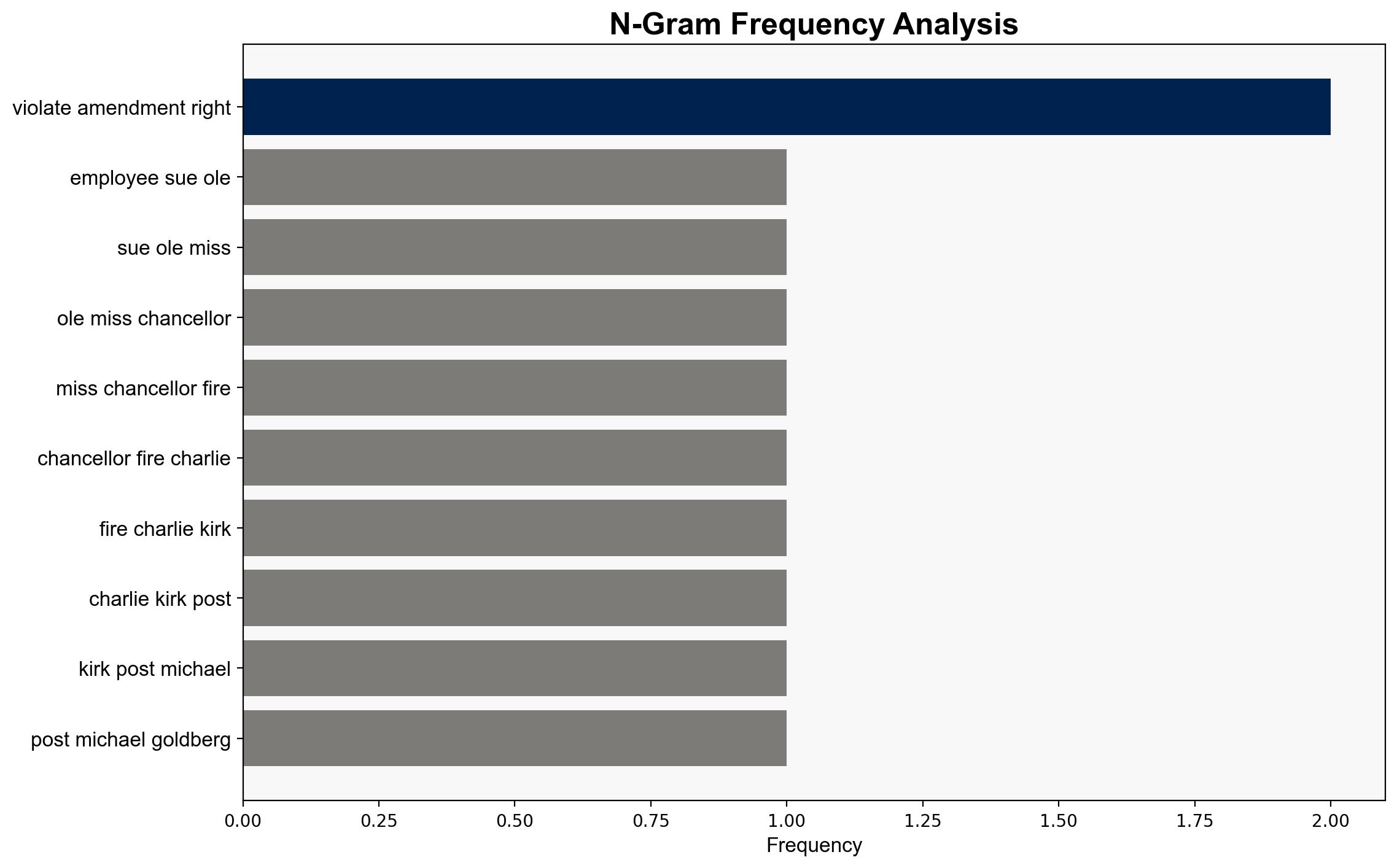University chancellor sued after employee fired for Charlie Kirk posts – Raw Story
Published on: 2025-10-23
Intelligence Report: University chancellor sued after employee fired for Charlie Kirk posts – Raw Story
1. BLUF (Bottom Line Up Front)
The most supported hypothesis is that the University of Mississippi’s decision to terminate Lauren Stokes was primarily driven by institutional values and public relations concerns rather than a direct violation of free speech rights. This assessment is made with moderate confidence. It is recommended that the university reviews its social media policies and communication strategies to better manage similar incidents in the future.
2. Competing Hypotheses
1. **Hypothesis A**: The termination of Lauren Stokes was a result of the university’s attempt to uphold its institutional values and manage public relations, rather than a direct infringement on her free speech rights.
2. **Hypothesis B**: The termination was primarily due to a violation of Stokes’ First Amendment rights, reflecting broader systemic issues within the university regarding freedom of expression.
Using the Analysis of Competing Hypotheses (ACH) 2.0, Hypothesis A is more supported by the evidence, particularly the university’s emphasis on institutional values and the timing of public backlash.
3. Key Assumptions and Red Flags
– **Assumptions**: It is assumed that the university’s actions were primarily motivated by the need to maintain its public image and adhere to stated values of civility and fairness.
– **Red Flags**: The rapid sequence of events following the social media post suggests potential external pressures influencing the decision. The lack of detailed public statements from the university about the decision-making process is a notable gap.
– **Cognitive Bias**: Confirmation bias may affect interpretations, with stakeholders potentially seeing the termination as either a necessary action or an overreach based on pre-existing views on free speech.
4. Implications and Strategic Risks
– **Patterns**: This incident reflects a growing trend of institutions facing backlash for employees’ social media activities, highlighting the tension between free speech and institutional values.
– **Cascading Threats**: Potential for increased polarization and legal challenges against public institutions, which could lead to reputational damage and financial liabilities.
– **Geopolitical Dimensions**: While primarily a domestic issue, the case could influence international perceptions of U.S. higher education institutions and their handling of free speech.
5. Recommendations and Outlook
- **Mitigation**: Develop clear guidelines for social media use that balance free speech with institutional values. Implement training programs for staff on these guidelines.
- **Opportunities**: Use the incident as a case study to foster dialogue on free speech and institutional responsibilities.
- **Scenario Projections**:
– **Best Case**: The university successfully navigates the legal challenge, reinforcing its policies and enhancing its reputation for handling complex issues.
– **Worst Case**: The lawsuit results in significant financial and reputational damage, prompting further scrutiny and potential policy changes.
– **Most Likely**: The case settles out of court with minor adjustments to university policies and practices.
6. Key Individuals and Entities
– Lauren Stokes
– Glenn Boyce
– Charlie Kirk
– Allyson Mill
– Shad White
7. Thematic Tags
national security threats, cybersecurity, counter-terrorism, regional focus




